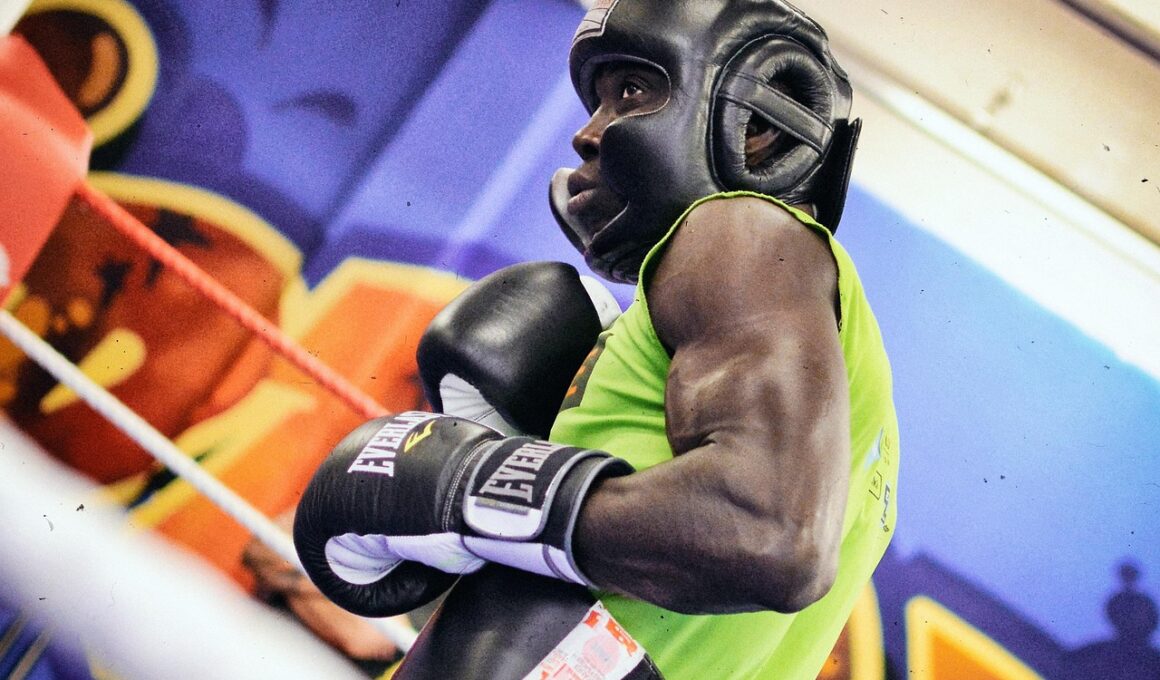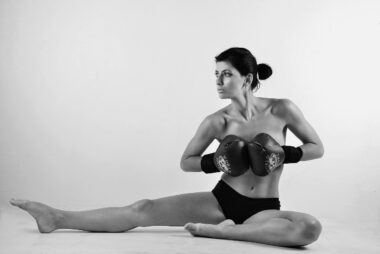Evaluating Different Kickboxing Headgear: Safety and Comfort
Kickboxing is a demanding sport that requires proper training and equipment for both safety and performance enhancement. One essential component of kickboxing gear is headgear, which protects the head while allowing fighters to train effectively. When choosing the right headgear, it’s crucial to consider factors such as fit, materials, and level of protection provided. Quality headgear should offer comfort without compromising on safety. A well-fitted headgear should allow the athlete to move freely and maintain visibility while sparring. Furthermore, the padding material plays a significant role in absorbing shock and reducing the impact of strikes. Brands like Fairtex and Winning have gained recognition for their emphasis on both safety and comfort. These brands incorporate advanced technology and materials to enhance the wearability of their headgear, offering models suitable for both beginners and experienced fighters. Ensuring adequate ventilation is also vital, as it helps in managing sweat during rigorous training sessions. Athletes must not only focus on prices and styles but should primarily prioritize headgear that meets personal training needs and contributes to overall safety in the sport.
Another essential aspect to consider when selecting kickboxing headgear is the level of protection it affords against various impacts. Headgear should adequately shield the head, particularly the temples, forehead, and chin areas. Some headgear designs feature a full face guard for enhanced protection. This can be beneficial for beginners, as it offers extra safety when learning techniques. Different styles are available, including those with open or closed face designs, each catering to varied training environments and sparring experiences. Furthermore, headgear should also be lightweight while still providing adequate protection since a heavy headgear may hinder performance. Many manufacturers now offer headgear options that include adjustable straps for a secure fit and customizable features for comfort. The fit is crucial because a loose headgear can compromise protection, while overly tight designs can lead to discomfort and distraction during training. Personal preferences also play a role in the selection process, as some athletes may prioritize aesthetic qualities alongside safety. Ultimately, investing in good quality headgear translates to a significant safeguard against injuries, enhancing performance and focus during intense training sessions.
Material and Design Considerations
The materials used in kickboxing headgear significantly impact its performance and durability. Various materials are employed, including synthetic leather and neoprene, which are commonly seen in more affordable options, while premium models often use genuine leather for improved durability and protection. Each material has its pros and cons, balancing weight, comfort, and protection. It is essential to select headgear that suits one’s training intensity and style, ensuring that it withstands the rigors of regular use. Design-wise, headgear is available in various shapes, styles, and colors, allowing fighters to express their personality while ensuring safety. Innovative designs have also been introduced to improve airflow and reduce overheating, a significant advantage during prolonged training sessions. Some models come equipped with moisture-wicking linings to combat sweat build-up, making for a more pleasant experience. A comprehensive evaluation of headgear includes reviewing available options to determine which best suits individual needs and preferences. With countless options in the market, opting for well-reviewed brands can help guide the decision to choose headgear that adheres to specified functionality, endurance, and protection quality.
Comfort is another pivotal factor that cannot be overstated when evaluating kickboxing headgear. A comfortable headgear encourages longer training sessions without causing strain or distraction. The interior cushioning should evenly distribute pressure, reducing the chances of hotspots or soreness. Athletes may prefer headgear lined with softer materials or gel inserts to enhance comfort further. The ability to adjust headgear is crucial as well; styles that feature adjustable chin straps and elastic bands allow a more personalized fit. Proper adjustments contribute to overall comfort and performance; the last thing a fighter needs is gear that continually shifts during sparring. Also, a snug fit with adequate padding does not eliminate comfort, as many athletes can still enjoy mobility and protection simultaneously. The overall experience when wearing headgear can greatly affect focus and performance during intense gym sessions. Ensuring that headgear is not only protective but also comfortable will lead to better training outcomes. Comfort in kickboxing headgear can enhance the athlete’s confidence, allowing them to concentrate fully on technique, sparring, and executing strategies without distractions.
Safety Standards and Certifications
Procuring kickboxing headgear that adheres to relevant safety standards and certifications is crucial for every athlete. Various organizations set safety benchmarks for martial arts equipment, ensuring that protective gear can withstand impacts effectively. Always look for headgear that meets the standards established by reputable bodies. Some common certifications include those from the International Amateur Boxing Association (AIBA) and the World Kickboxing Association (WKA). Having certified headgear not only provides added assurance for personal safety but also can be a requirement during competitions and sparring sessions. When considering an option, validating if it meets these safety certifications can provide peace of mind. Gear that is not certified might lack sufficient protection against serious injuries. Additionally, athletes must remain aware of the expiration date on their headgear, as materials can degrade over time, affecting performance and safety. Regularly inspecting headgear for wear and tear is also essential for making informed replacements. A proactive approach includes understanding how to properly care for headgear, ensuring that it remains in optimal condition for all training sessions, thus maintaining the quality for years to come.
After understanding various aspects of kickboxing headgear, considering the available choices can appear overwhelming. However, compiling a list of priorities will simplify the selection process. Start by listing specific needs such as compatibility with training types, desired level of visibility, and comfort. Knowing these factors can guide the selection toward suitable styles and designs. Reading reviews and testimonials from other athletes can provide valuable insights into the performance of various headgear. Make sure to check both training and competition applications, as some headgear might be permitted in specific environments and not others. Comparing different brands based on features, safety ratings, comfort level, and durability will further narrow down choices. Also, considering price range while affirming quality can help in making an intelligent purchase. The best choice should harmoniously balance personal preference and established safety standards. When aware of the critical features to focus on, you’ll find a headgear option that enhances your kickboxing training while protecting your vital areas. The journey to find suitable headgear ultimately leads to improved performance and confidence in implementing learned skills.
Ultimately, selecting the right kickboxing headgear is a blend of personal preference, safety considerations, and maintenance. Once you’ve chosen your headgear, proper care must be taken to ensure longevity. Regular cleaning using a damp cloth and mild soap is necessary to remove sweat and grime buildup, which can deteriorate materials over time. Check for damages frequently and replace any worn-out padding or straps immediately. After each training session, ensure that the headgear is adequately dried to prevent mold or unpleasant odors. When not in use, store it in a dry, breathable bag, allowing airflow. It’s also essential to familiarize yourself with the manufacturer’s instructions for care specifics. Taking time to understand how to maintain the gear will undoubtedly increase the lifespan and effectiveness for years. Building good habits around equipment care enhances the comfort and safety that the headgear provides, directly impacting performance during training. Understanding maintenance also positions athletes for a more advanced approach, preparing them for competitions by ensuring all gear remains compliant and functional. A protective, well-maintained headgear can make a significant difference in every combat situation and training regime.
In summary, choosing suitable kickboxing headgear encompasses safety, comfort, design, material, and maintenance types. A broader awareness of these components allows athletes to make informed decisions. The safest headgear enhances performance by providing reliable protection and comfort while training. Prioritizing quality ensures that your investment yields long-term benefits, enabling athletes to focus on their technical training without constant worry about safety. Whether are a seasoned fighter or just starting out, properly evaluating headgear before final purchase can lead to better training experiences. Take time to assess available options, listen to seasoned fighters, and research features that meet your unique needs. Ultimately, your headgear is an essential part of your kickboxing journey and should be treated as such. As industries evolve, continuing to explore superior technologies in headgear will keep athletes on the cutting edge of safety innovation. Investing time and resources in high-quality kickboxing headgear not only preserves your health but also allows for unlimited progression in kickboxing as a martial art.





